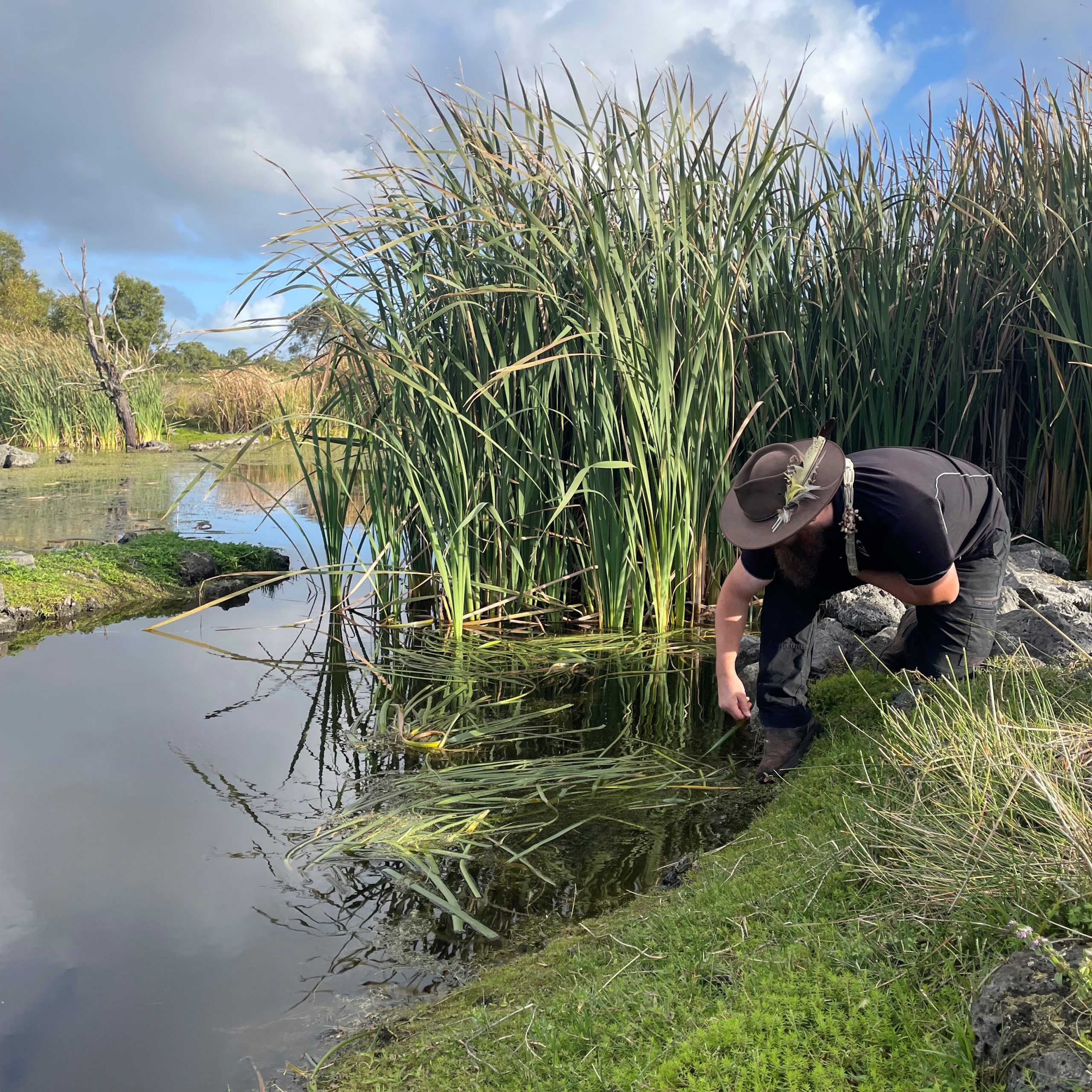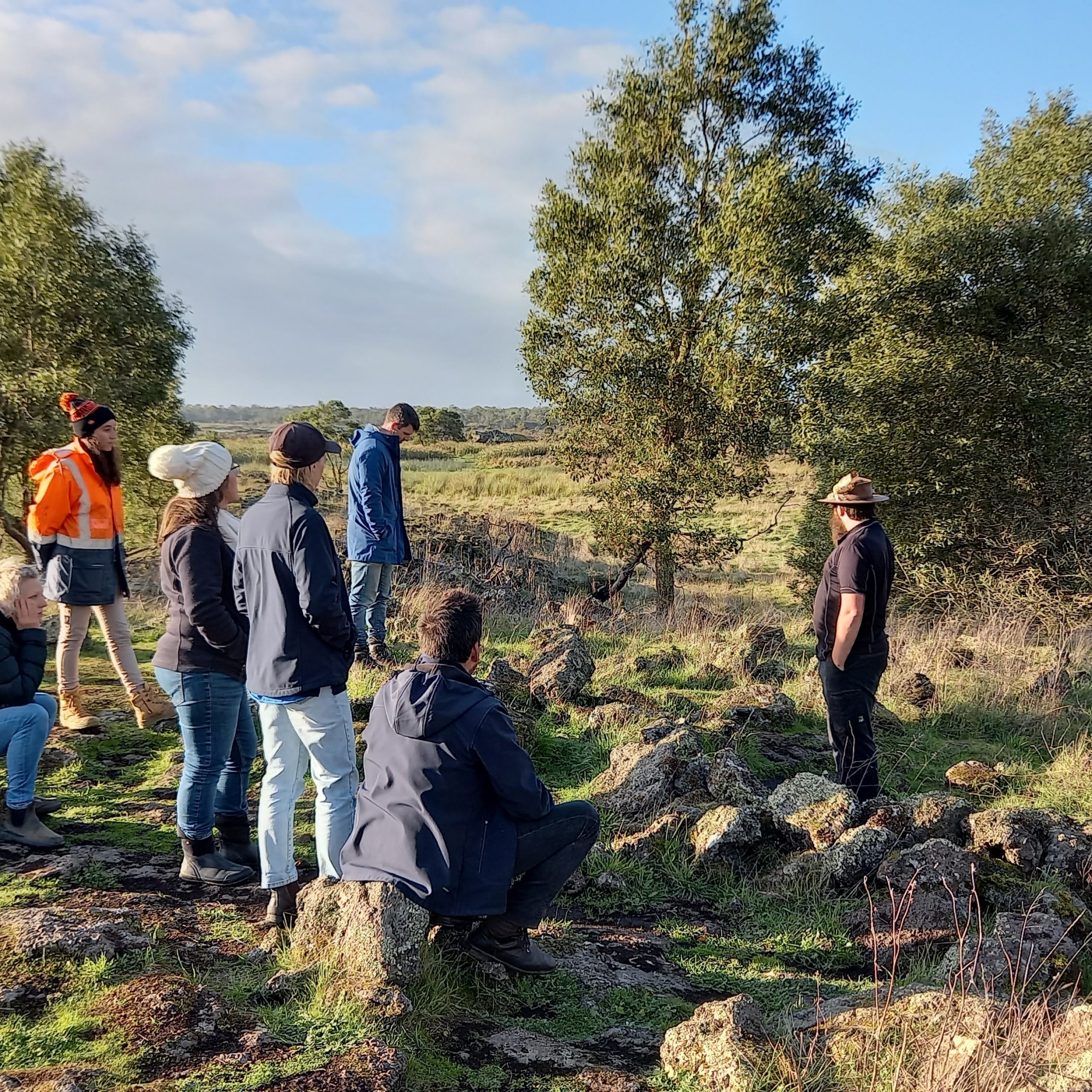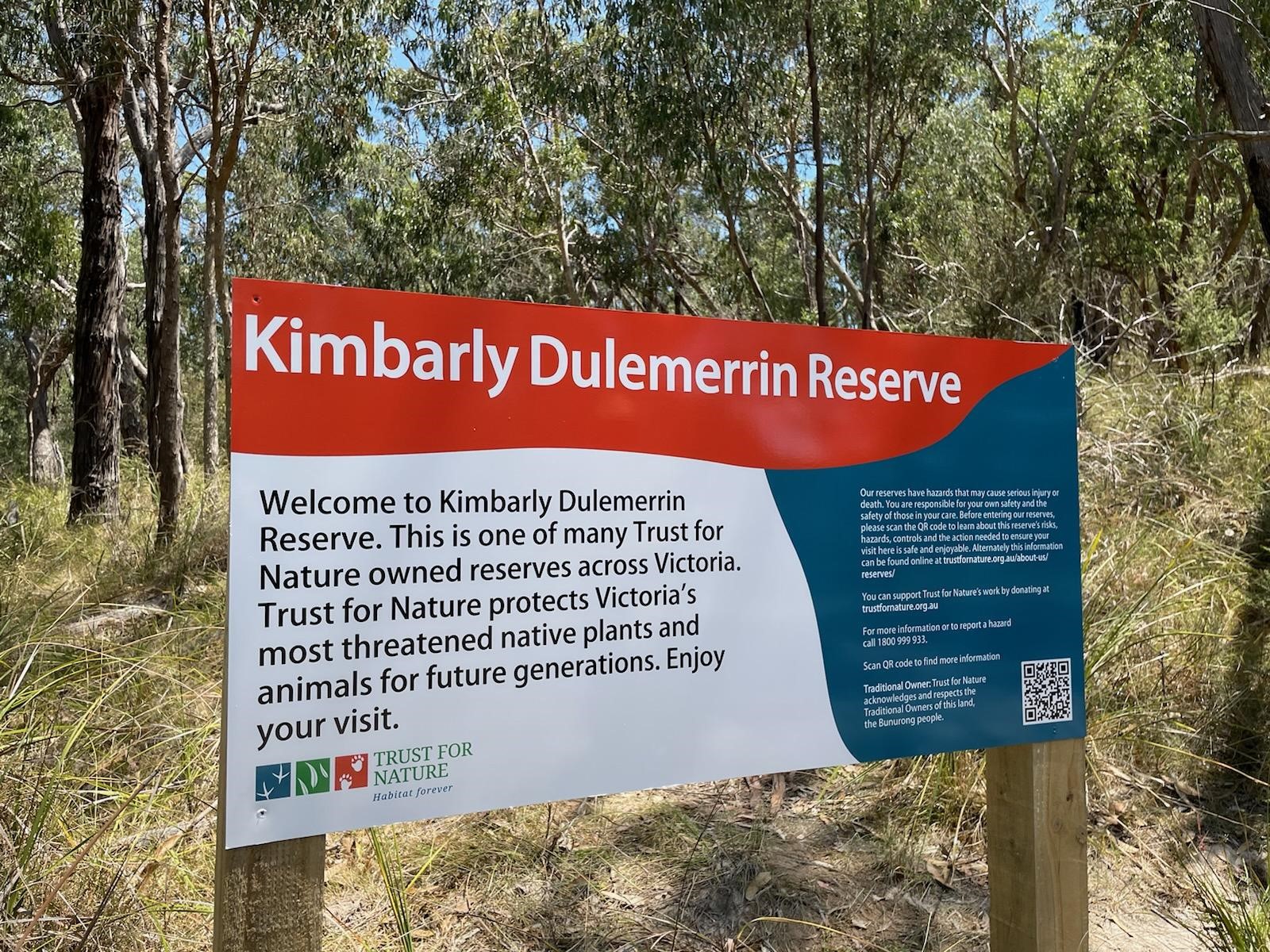Connecting to Country at Budj Bim and beyond
One of the things Braydon Saunders loves most about being a Tour Guide Coordinator at Budj Bim Cultural Landscape in South West Victoria is seeing the ‘penny drop’.
That’s how the Gunditjmara man describes the moment he recognises on the faces of the visitors he’s speaking to, when they understand the significance of the land they’re standing on and the stories of the Indigenous people who lived there for more than 30,000 years.
“It’s so empowering when you see people recognise that history,” Braydon said. “This is Country I’ve been living on for 23 years, waking across the stones, but people are still able to understand its importance just by being out here for a few hours.”
The Budj Bim Cultural Landscape is a unique place with universal heritage values that demonstrate how the Gunditjmara people worked with the natural resources and environment to establish a social and economic base for Gunditjmara society. In 2019, it was inscribed on UNESCO’s World Heritage List.
The 9,935 ha landscape includes the Budj Bim Volcano and Tae Rak (Lake Condah), as well as the Kurtonitj component, characterised by wetland swamps, and Tyrendarra in the south, an area of rocky ridges and large marshes. The Budj Bim lava flows, which connect these three components, have enabled the Gunditjmara to develop one of the largest and oldest aquaculture networks in the world. Composed of channels, dams and weirs, they are used to contain floodwaters and create basins to trap, store and harvest the kooyang, Short Finned Eel (Anguilla australis).
“Our people have been able to help rewrite the understanding of Indigenous people in Australia and across the world,” explained Braydon. “People now realise that the Indigenous way of living on landscape works, and there is a shift as we turn back to First Nations people to gain a better understanding of ways to care for Country.”
This is a shift, a dawning understanding, that Trust for Nature has been a part of for many years. Engaging regularly with Traditional Owners through joint projects, spending time together on Country, sharing knowledge, nurturing land, the organisation is committed to First Nations people in conserving, restoring, and protecting natural environments, wildlife and cultural heritage values.
Thanks to funding from the Victorian Government, under Trust for Nature’s Iconic Estates Program, staff recently had the opportunity to visit Budj Bim Cultural Landscape for a tour with Braydon and his team to gain a better understanding of the significance of the area.
“It was truly mind-blowing to see the way the Traditional Owners managed the land at Tae Rak,” said Amelia Houghton, Trust for Nature’s Statewide Operations Manager, who was part of the visit and had the chance for a treasured penny dropping moment.
“To think that something of this significance is right here in our own state is incredible.”
Trust for Nature’s Senior Conservation Officer Adam Merrick also had the opportunity to attend.
“It was such a great way for us to engage and learn, and celebrate the world heritage status of the Budj Bim landscape,” Adam said, “and we are hoping that will lead on to other engagement with Traditional Owners in the South West. We are currently exploring the opportunity to covenant land around Budj Bim, as there is spectacular and important vegetation, geology, and habitat through that zone, and also assist with cultural burns where it might be suitable on both land we own and help manage.”
Engagement and collaborative land management opportunities with Traditional Owners around Budj Bim is just one part of Trust for Nature’s organisation-wide approach to Indigenous partnerships.
“We have an overarching Reconciliation Action Plan which currently guides our approach, and because we work in conservation and land management, Traditional Owner engagement is central to how we operate,” Amelia said. “We are continuing to learn and embed cultural land management practices into the western science approach to managing covenants and reserves.”
This includes a cool season burning pilot project in the state’s North East, working with many Traditional Owner groups to improve habitat, and handing back Neds Corner Station to the First People of the Millewa Mallee Aboriginal Corporation. Trust for Nature also facilitates the Certificate III in Conservation and Ecosystem Management for First Nations/Traditional Owners (AHC31420), which has been designed by and specifically for Aboriginal and Torres Strait Islander Peoples to gain skills to work on Country. Trust for Nature proudly employs three Cultural Liaison Officers to support Aboriginal voices in the workplace; two are graduates of this course.
“It’s important that we do everything we can to support connection to Country continuing,” Amelia said.
For Braydon, it’s vital that Indigenous people are there with organisations like Trust for Nature at the forefront of conservation and land management at every opportunity.
“We want to learn just as much as we want to teach, and giving that chance to First Nations people is so important,” he said. “It means a lot.”
The Iconic Estates 2 project was supported by the Victorian Government’s Protecting Biodiversity Program.
Learn more about Budj Bim at budjbim.com.au


